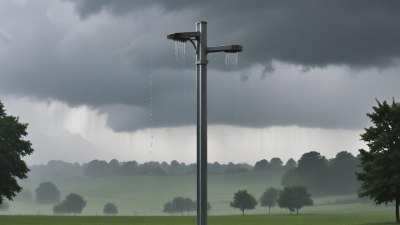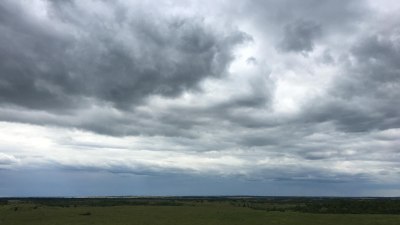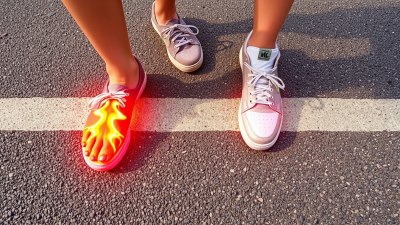How to Measure Rainfall Accurately
Discover the best methods to measure rainfall accurately for effective data collection and analysis.

This image was created with the assistance of Freepik
Measuring rainfall accurately is crucial for various applications, including agriculture, meteorology, and water resource management. Understanding rainfall patterns helps in predicting weather, managing crops, and mitigating flood risks. This comprehensive guide details the essential techniques and tools required to measure rainfall accurately, along with best practices and considerations to ensure reliability.
Understanding Rainfall Measurement
Rainfall measurement involves quantifying the amount of precipitation falling over a specific period. Meteorologists, researchers, and hobbyists alike use this data to analyze weather trends and inform decision-making processes. Rain gauges are the primary instruments employed for this measurement, but various types and methods exist that can affect accuracy. Ensuring precise measurements is paramount, as even small discrepancies can lead to significant implications in forecasting and planning.
Types of Rain Gauges
There are several types of rain gauges, each with unique characteristics and suitable applications:
Standard Rain Gauge
This commonly used gauge consists of a cylindrical container with a funnel that directs rainwater into a measuring tube. The amount of rainfall is determined by the level of water collected, usually measured in millimeters or inches. Standard rain gauges are straightforward to use and ideal for both amateur meteorologists and professional settings.
Electronic Rain Gauge
These gauges utilize sensors to measure rainfall electronically. They often provide real-time data and can transmit information wirelessly to computers or mobile devices. Electronic rain gauges are ideal for users who require continuous monitoring and data logging capabilities, making them suitable for research and advanced weather stations.
tipping Bucket Rain Gauge
A tipping bucket rain gauge consists of two small buckets mounted on a pivot. When a predetermined amount of rain collects, one bucket tips over, emptying its contents and allowing the second bucket to fill. This mechanism triggers a counter that records the number of tips, converting that data into rainfall measurement. Tipping bucket rain gauges are popular in automatic weather stations for their efficiency and accuracy.
Choosing the Right Location
Before measuring rainfall, selecting the right location for your rain gauge is critical. Analysts recommend placing the gauge in an open area away from obstructions such as trees, buildings, or fences, which could block precipitation. Ideally, a location should be flat and well-drained, as puddling or runoff can skew readings. Additionally, positioning the gauge at least 1.5 meters above the ground helps reduce the influence of wind, which can affect rainfall capture.
Installation and Maintenance
Proper installation of rain gauges is vital for accurate results. Ensure that the gauge is level, as an unlevel gauge can lead to an underestimation of recorded rainfall. Regular maintenance, including cleaning the gauge and checking for damage or blockages, is essential to ensure the functionality of the equipment. Inspect the rain gauge frequently, particularly after significant weather events, to remove any debris that may have collected.
Data Collection and Analysis
Once the rain gauge is set up, data collection begins. Collect readings consistently, preferably after each rainfall event or on a daily basis. Note the amount of rainfall recorded and the time of measurement. Most meteorologists recommend maintaining a logbook or digital record for data tracking and analysis.
Interpreting Rainfall Data
Interpreting the collected rainfall data requires an understanding of various factors that can influence precipitation patterns. Comparing data over time can reveal trends, such as seasonal variations and anomalies. It’s also beneficial to account for regional climate factors, including temperature and humidity, as they can affect the overall rainfall experienced in a given area.
Common Challenges in Rainfall Measurement
Several challenges can arise while measuring rainfall, including:
Wind Effects
Wind can cause rain to splatter and may result in inaccurately low readings. To mitigate this, use rain gauges designed specifically to minimize wind effects, or consider building a wind shield around the gauge.
Evaporation
In hot climates or during extended periods without rain, evaporation can occur, affecting the measurement accuracy. Covering the gauge or using a design that reduces evaporation can help maintain accurate readings.
Collecting Debris
Debris such as leaves or twigs can obstruct the gauge, leading to faulty measurements. Regularly clean the rain gauge and position it away from potential sources of debris to minimize this risk.
Conclusion
Accurate rainfall measurement is fundamental for understanding environmental conditions and making informed decisions regarding agriculture, water management, and meteorological research. By selecting the appropriate type of rain gauge, ensuring proper installation and maintenance, and addressing potential challenges, individuals can acquire reliable data. As climate patterns continue to evolve, accurate rainfall data collection will play an increasingly vital role in our ability to adapt and respond to changes in weather and water availability.
Advanced Techniques and Technologies
As technology evolves, innovative methods for measuring rainfall are developing to enhance accuracy and efficiency. Remote sensing technologies, such as satellite-based precipitation estimates and radar systems, provide broader coverage and can contribute valuable data in regions where ground-based measurements are sparse. These technologies can complement traditional gauges and enable researchers and meteorologists to have a more comprehensive understanding of precipitation patterns.
The Importance of Citizen Science
Citizen science initiatives allow individuals to contribute to rainfall data collection, amplifying efforts in regions with limited availability of meteorological resources. By participating in programs that encourage ordinary citizens to measure and report their rainfall data, communities can enrich the data landscape, fostering better understanding and response mechanisms to local weather conditions.
Educational Opportunities
Engaging in rainfall measurement can stimulate interest in the sciences, particularly in younger generations. Schools and educational institutions can incorporate rainfall measurement into their curriculum, promoting hands-on learning while also gathering valuable data. Science projects surrounding rainfall collection can encourage critical thinking, data analysis, and environmental stewardship.
Future Trends in Rainfall Measurement
As climate change continues to influence precipitation patterns worldwide, advancements in rainfall measurement technologies will be paramount. Emerging methods may include artificial intelligence and predictive algorithms, enhancing forecast accuracy. Trends toward integrating machine learning with meteorological data can yield significant insights and improve rainfall prediction models, ultimately assisting with adaptation strategies.











